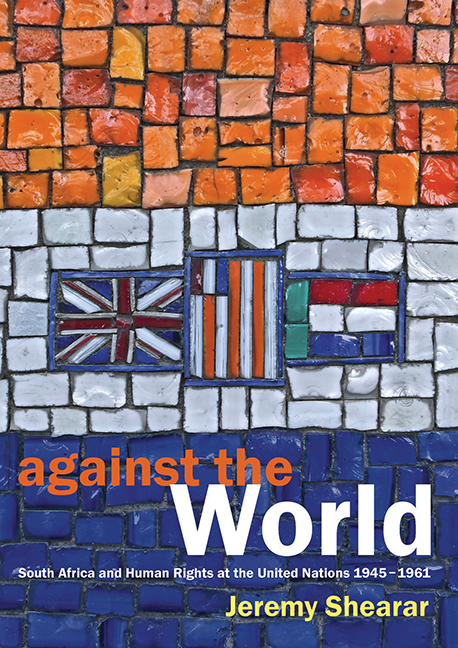Book contents
- Frontmatter
- Contents
- Acknowledgements
- Abbreviations
- Introduction: ‘What we have lost is all the more reason for cherishing what survives’
- 1 Quod severis metes: Birth of the United Nations
- Chapter 2 South African Indians
- 3 Universal Declaration of Human Rights
- 4 International covenants on human rights
- 5 United Nations surveys of human rights issues
- 6 Evolution of human rights at the United Nations
- 7 State sovereignty at issue
- 8 Apartheid on the agenda
- 9 Shadow of Sharpeville
- 10 General relations with the United Nations
- 11 Concluding observations
- Appendix: Selected provisions of the United Nations Charter
- Sources and references
- Index
Introduction: ‘What we have lost is all the more reason for cherishing what survives’
Published online by Cambridge University Press: 19 March 2020
- Frontmatter
- Contents
- Acknowledgements
- Abbreviations
- Introduction: ‘What we have lost is all the more reason for cherishing what survives’
- 1 Quod severis metes: Birth of the United Nations
- Chapter 2 South African Indians
- 3 Universal Declaration of Human Rights
- 4 International covenants on human rights
- 5 United Nations surveys of human rights issues
- 6 Evolution of human rights at the United Nations
- 7 State sovereignty at issue
- 8 Apartheid on the agenda
- 9 Shadow of Sharpeville
- 10 General relations with the United Nations
- 11 Concluding observations
- Appendix: Selected provisions of the United Nations Charter
- Sources and references
- Index
Summary
Aim
Through the person of General Jan Christiaan Smuts, its representative in the British War Cabinet of 1918, the Union of South Africa was intimately connected with preparations for the Covenant of the League of Nations in 1919. As a founding member, South Africa played a valuable role in the work of the League of Nations during the between-war years and was thrice elected to preside over its Assembly. During the 1935 debates on the imposition of sanctions against Italy after the invasion of Abyssinia, it even claimed to speak on behalf of the African continent. The regard in which the Union was held, was dampened only by the criticism it sometimes endured over its administration, under mandate, of the Territory of South West Africa, present-day Namibia.
The history of South Africa's later relations with the United Nations, after the demise of the League, can be divided into several phases. This work is limited to the first phase, 1945 to 1961, while the Union was a member of the British Commonwealth. It traces and comments on South Africa's decline in prestige in the United Nations after 1945; its failure to adapt to post-war global trends promoting human rights and fundamental freedoms; and the strengthening of discriminatory legislation after the advent of the National Party to power in 1948. It records the Union's steady alienation within the international community; the initial impact of the new members of the United Nations; and the involvement of the Security Council (SC) in the aftermath of the March 1960 Sharpeville demonstrations. South Africa's decision thereafter to become a republic and its withdrawal from the Commonwealth in 1961, which lead to its isolation in the General Assembly, provide a logical cut-off date.
A second phase would review isolation of South Africa within the United Nations while it was still allowed, over objections of the Africa and other groups, to participate in the organisation's work. This period would include the adoption of the two covenants on human rights; the establishment of the Human Rights Committee; and the evolution of the administrative aspects of human rights law. Pressures on South Africa increased with the establishment of the Special Committee Against Apartheid; calls for various forms of sanctions; and attempts to discredit the credentials of the South African delegation to the General Assembly.
- Type
- Chapter
- Information
- Against the WorldSouth Africa and Human Rights at the United Nations 1945–1961, pp. 1 - 6Publisher: University of South AfricaPrint publication year: 2017



